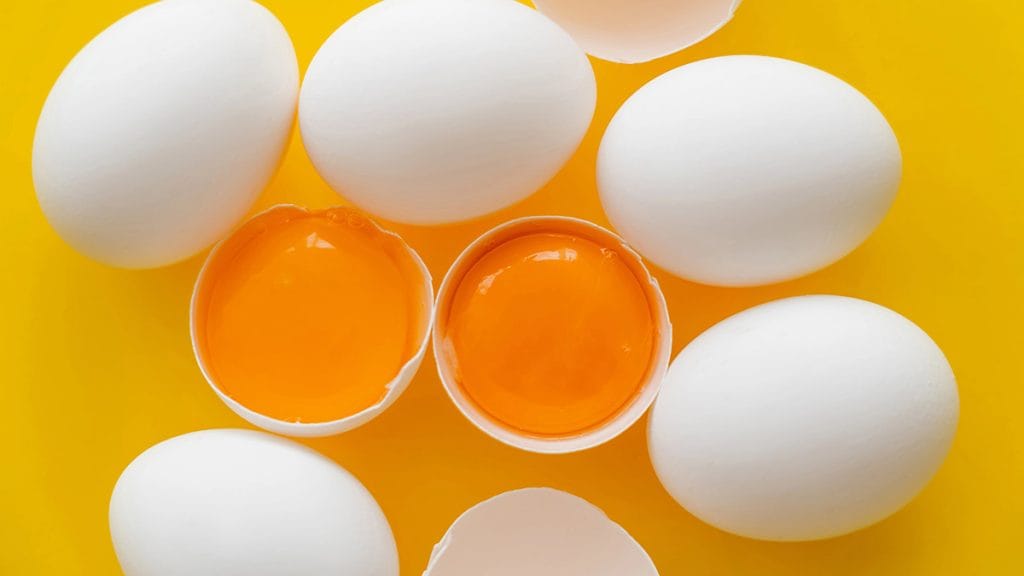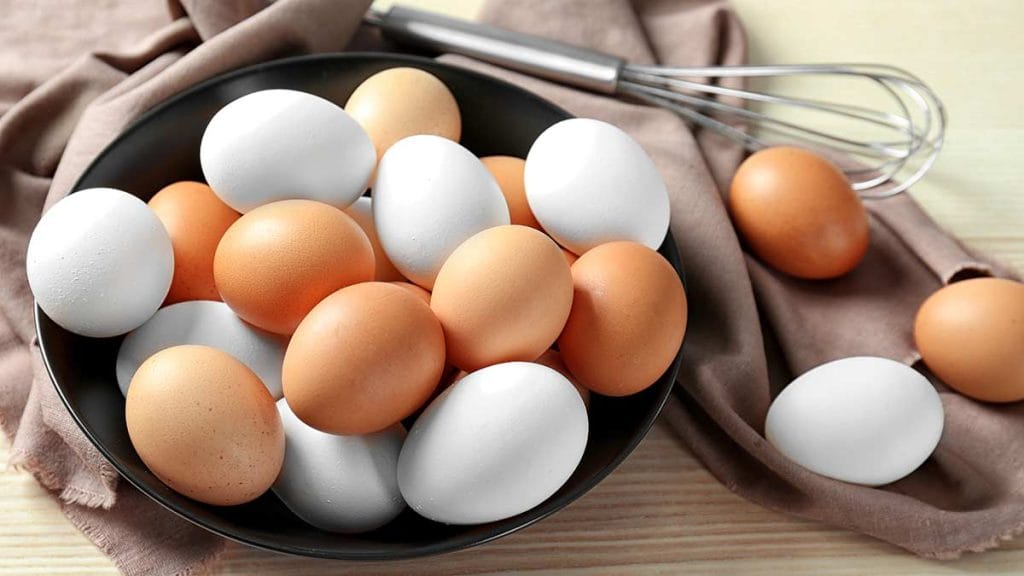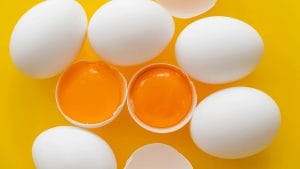By Penny Eaton
Have you ever wondered about why some of the eggs you buy at the store have very light yellow yolks while others are quite dark—sometimes almost orange? Why is that?
The simple reason is that yolk colour is mainly determined by the food that hens eat. By and large, if egg-laying chickens eat feed that contains corn or alfalfa, it will result in eggs with darker yellow yolks. If hens eat a wheat-based diet, the eggs have pale yellow yolks because wheat is much lighter in colour.

What’s the difference between white eggs and brown eggs?
Actually, there is no nutritional difference between white and brown eggs—unless the chickens that produce them are fed a certain kind of feed (like Omega-3 eggs), but that difference would not be due to the eggshell colour. The colour of the shell depends on the breed of the hen. For the most part, white shelled eggs are from hens with white feathers, while brown shelled eggs come from hens with brown feathers.
There are some breeds of chicken that lay other coloured eggs, but they are more rare. In Canada, egg farmers mainly have the Leghorn breed of chicken as it is one of the most efficient at laying eggs that you see more white eggs at grocery stores.

What’s with all the different sizes of eggs?
Here’s the thing: as a hen gets older, it will lay larger eggs. When eggs are graded, they are sorted by weight and packaged as pee wee, small, medium, large, extra large or jumbo. Because eggs are sorted by weight—not size or shape—you might see a carton of what looks like different sized eggs, but those eggs will all be in the same weight classification.
You’ll notice that most recipes call for large eggs. Eggs.ca says that most of the time, medium or extra large eggs can be used instead of large eggs for recipes, except if you’re working with whipped egg whites.
How come some shells are thicker than others?
As we learned, hens lay bigger eggs as they get older. However, the amount of calcium that is deposited into the shell remains the same, even as the shell size gets larger. This means the same amount of calcium is stretched into a larger size, resulting in thinner shells as the hen gets older.
Find out more:



